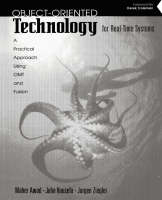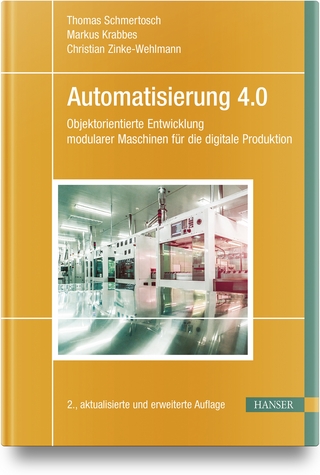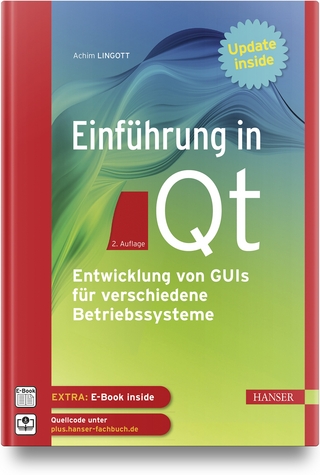
Object-Oriented Technology for Real Time Systems
Addison Wesley (Verlag)
978-0-13-227943-7 (ISBN)
- Titel ist leider vergriffen;
keine Neuauflage - Artikel merken
The OCTOPUS method provides a systematic approach for developing object-oriented software for embedded real-time systems. This book describes the well-integrated OCTOPUS development process that covers the major phases of developing software. From requirements specifications to implementation, the models are continuously and clearly linked. KEY TOPICS: Covers concurrency, synchronization, communication, the handling of interrupts, ASICs, hardware interfaces, and end-to-end response time through the system. MARKET: For object-oriented software developers, programmers, and embedded-system engineers.
Maher Awad has more than seven years of experience in developing hardware and software for access network products at Nokia Telecommunications and at Nokia Research Center in Helsinki, Finland. He is currently a R&D Manager at Nokia Research Center, where he is developing and transferring object-oriented technology to the software development of real-time systems. He also lectures in the field of software and telecommunications engineering. Jurgen Ziegler worked for Hewlett-Packard for ten years, developing real-time systems for chemical instruments. After that, he was responsible for the development of system software products at Nokia Data. Since joining the Nokia Research Center in 1990, he has worked on a company-wide initiative that transfers object-oriented technology for the development of embedded microprocessor products. Juha Kuusela first worked for Nokia Electronics, supporting the sales of knowledge-based systems. After that, he worked at the Helsinki University of Technology developing embedded real-time systems. He developed execution mechanisms for formal specification languages. Since 1991, he has worked as a R&D manager at Nokia research Center. He has also participated in several European research projects of knowledge-based systems, software development processes, and object-oriented technology development.
1. Introduction.
Real-time Systems. Object-Oriented Methods. Concurrency in a Real- time System. Object-Oriented Concurrency Models. Levels of Concurrency. Design Criteria of OCTOPUS. Introduction to Case Studies.
2. Overvoew of the Octopus Method.
Roadmap and Structuring the Development Process. System Requirements Phase. System Architecture Phase. Subsystem Analysis Phase. Subsystem Design Phase. Subsystem Implementation Phase.
3. Requirements Specification.
Use Cases. Use Case Diagram. System Context Diagram.
4. System Architecture.
Modular Structure. Early Division into Subsystems. Subsystems Diagram. Incremental Development. Interfaces. Example.
5. Analysis Phase.
Object Model. Functional Model. Dynamic Model. Analysis of the Hardware Wrapper. Summary.
6. Design Phase.
Design Objects. Interaction of Objects. Class Outlines. Design of Concurrency. Outlines of Processes and Messages. Design of the Hardware Wrapper. Summary.
7. Process Priorities and Timing.
Basic Concepts. Deriving Process Priorities. Timing and Concurrency Behavior.
8. Transition from Design to Implementation.
C++ and C Interpretability. Member Access Control. Visibility. Memory and Performance Optimization. Synchronization. Implementing Statecharts. Constructing Global Objects. Development Environment.
9. Case Study: Subscriber Line Tester.
System Requirements Specification. SLT Application Subsystem Analysis. SLT Application Subsystem Design. Exercise: Hardware Wrapper.
10. Case Study: Cruise Control.
Recapped System Requirements Specification. Application Subsystem Analysis. Analysis and Design of the Hardware Wrapper. Design of Application Subsystem.
11. Referemce Manual.
Notation Summary. Case Tools. OCTOPUS Roadmap.
References.
Glossary.
Index.
| Erscheint lt. Verlag | 25.3.1996 |
|---|---|
| Verlagsort | Boston |
| Sprache | englisch |
| Maße | 182 x 243 mm |
| Gewicht | 590 g |
| Themenwelt | Informatik ► Software Entwicklung ► Objektorientierung |
| Mathematik / Informatik ► Informatik ► Theorie / Studium | |
| ISBN-10 | 0-13-227943-6 / 0132279436 |
| ISBN-13 | 978-0-13-227943-7 / 9780132279437 |
| Zustand | Neuware |
| Haben Sie eine Frage zum Produkt? |
aus dem Bereich


